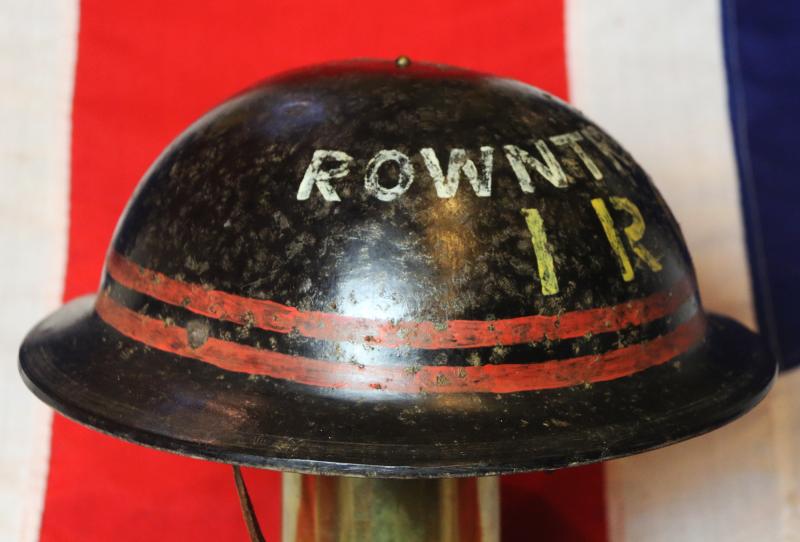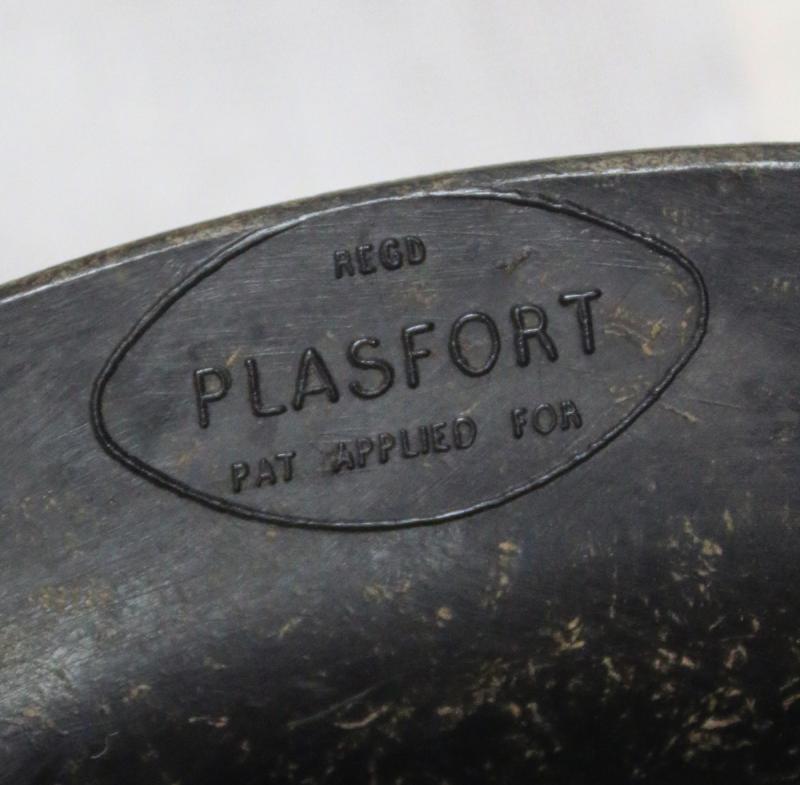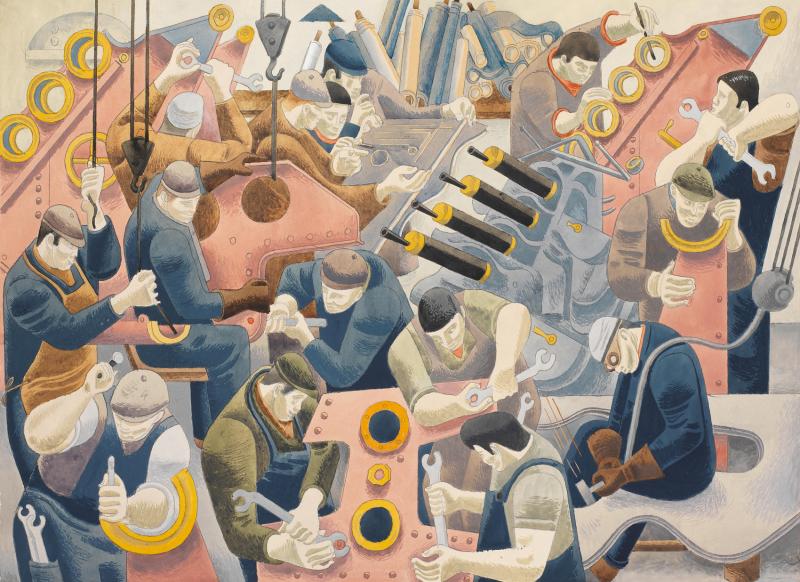A Very Rare WW2, Factory Named 'Battle of Britain' & 'The Blitz' Period Rowntree's Factory Civil Defence Munitions Helmet. A Non Sparking Plasfort I R O Helmet, Used Before, During & After The 1942 Baedeker Raid in York. 9,500 Homes Destroyed
Traditional, original, British 'Brodie' pattern helmet of WW2.
Stencilled with Rowntree's of York in white and I R O in yellow, which may represent Incident Rescue Officer, with two additional red stripe bands to denote higher rank. original lining perfect with leather strap {lacking buckle}.
Factory issue, WW2 named helmets are very rare indeed, and Rowntree's munitions and fuse factory is one of the rarest. In fact, in our experience, we have never seen another surviving example in 50 years. One of the old Rowntree factories was burnt to the ground in the 1942 Baedeker Raid, with 84 tonnes of incendiary bombs were dropped on the city, which destroyed 9,500 houses, numerous factories and the railway. 90 civilians died and 200 were injured. The Edinburgh train, packed with soldiers, took a direct hit. However York was valiantly defended by Yves Mahé, a Free French fighter pilot. {See a photo of him in photo 10 in the gallery.} Not all fighter pilots who defended the skies above Britain during the Battle of Britain and later in the war were British. Some of them were refugees from such as France or Poland. There were a total 14 Free French pilots and 146 Free Polish pilots that fought with the RAF. When their own countries were invaded by the Nazis, they fled here to Britain to continue the fight. One of these was the Free French pilot Yves Mahé, who helped save York from German bombers on the night of the Baedeker Raid
These 'Plastfort' helmets were made from bakelite, and early form of plastic, at the beginning of the Second World War. They were issued predominantly to the factory works, particularly those working in Royal Ordnance Factories making munitions. They plastic shells were used in place of metal as they could not create sparks.
Affected by restrictions on sugar imports and rationing, the factory buildings were temporarily converted. Much of Rowntree’s cream department was reconfigured for the production of munitions, Ryvita and dried egg, while the gum department was converted into a secret fuse factory, named County Industries.
In addition to its cocoa and chocolate production, it was felt that the company could offer an effective unit for the manufacture of munitions.
In 1941, what was previously the Smarties building was converted into a fuse filling factory:
Work of this kind was something which had never before been undertaken by Rowntree employees. If safety rules were disobeyed the penalty might be loss of life or limb.
Despite this, neither workers nor management were deterred from the task at hand and magazines for the storage of explosives had to be constructed. Fuses were required in vast quantities and targets were set for production at 100 000 units per week.
Yves Mahé, a Free French fighter pilot
who helped defend York during the 1942 Baedeker Raid. In the early hours of 29 April 1942, a
fleet of German bombers arrived in the skies above York. For more than 90 minutes during what became known as the ‘Baedeker Raid’ they rained down 84 tonnes of incendiary and high explosive bombs, setting the city ablaze. More than 90 civilians died,
more than 200 were injured and it was estimated that 9,500 houses were destroyed or damaged.
Many public buildings were also severely damaged, including the medieval Guildhall and the church of St Martin le Grand in Coney Street.
The old Rowntree factory in North Street was burned to the ground; the railway station was badly damaged and the incoming King’s Cross to Edinburgh train crowded with service personnel took a direct hit. Also hit were Clifton Aerodrome; St Peter’s School; Queen Anne Grammar School for Girls; the Manor School, Marygate and the Bar Convent, where the building collapsed killing five nuns.
Rowntree Park, donated by Joseph Rowntree at the end of the First World War as memorial to those who had fallen, added the gates at the Terry Street entrance to serve as a memorial to those who had also given their lives during the Second World War. Both Wars are commemorated by plaques in the Lych Gate, in the centre of the park next to the statue and fountains.
Volunteer non-British pilot numbers of the RAF in WW2
Poland 145-146
New Zealand 127–135
Canada 112
Czechoslovakia 84–88
Belgium 28–30
Australia 26–32
South Africa 22–25
Free France 13–14
Republic of Ireland 10
United States 9–11
Southern Rhodesia 3–4
Barbados 1
Jamaica 1
Newfoundland 1
Northern Rhodesia 1
Code: 25573
280.00 GBP










